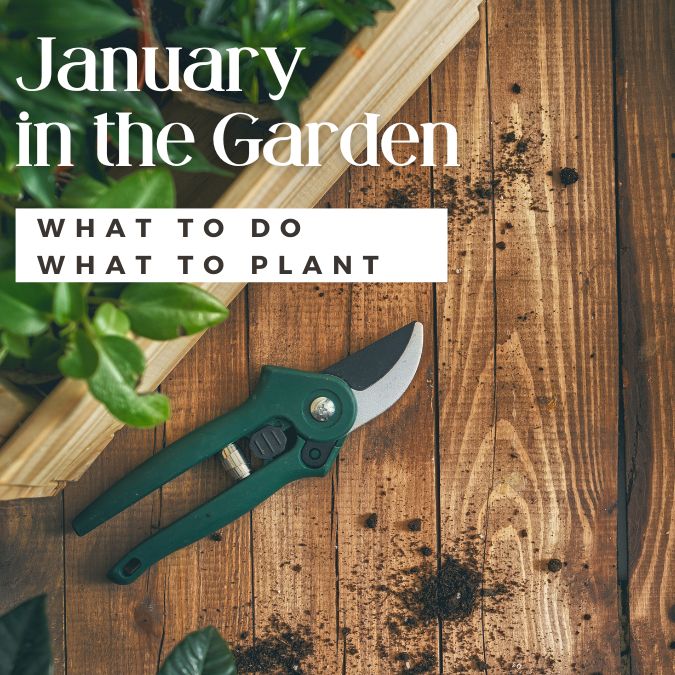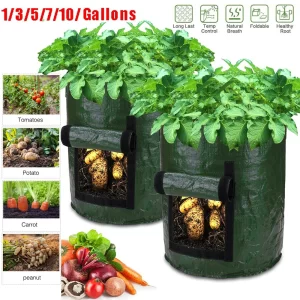Reminiscing about living in Indiana and Kentucky, January used to be an exciting time marked by the arrival of seed catalogs. Hours were spent poring over them, deciding what to plant for the upcoming planting season.
Fast forward to my current residence in Pinellas County, Florida, zone 10A, and January brings with it an opportune window for gardening activities.January is a good time to plan changes you would like to make in your landscape. Whether you envision creating a new bed, altering an existing one, or simply introducing new plants, January sets the stage for preparing these areas. The relative coolness of the season stands in stark contrast to the oppressive heat of August, making gardening tasks much more manageable.

This month is not just about planning; it’s the time to get your hands in the soil. January presents a golden opportunity to plant those annuals that shy away from the scorching summer heat. Dianthus, pansy, verbena, strawflower, lobelia, petunia, viola, and snapdragon take center stage during this period. However, a word of caution – keep a watchful eye on the thermometer. While pansies and violas can defiantly brave a hard freeze, other annuals like petunias and snapdragons might require a bit of cold protection to weather the chill.
Bulbs also make their appearance in the January garden. Crinum, agapanthus, and gloriosa lily can be planted now. To shield them from the occasional cold snap, a generous layer of mulch offers protection.
Now is also the time to select and plant camellias. I will be talking more about camellias and their care in an upcoming post.
The January gardener’s calendar is marked by Arbor Day. In Florida it is celebrated on the third Friday of January (January 19th this year). Many local events are giving away small trees that you can take home and plant. Besides the pines that are frequently given away, this is an excellent time to plant deciduous fruit trees, allowing their roots to establish before the warmth of spring. Planting a tree comes with its own set of considerations – contemplate the mature height and width, ensuring ample space for the growing giant.
As for lawns, January offers a brief respite. While it’s an opportune moment to evaluate areas in need of rejuvenation or correction, the replacement of grass should be deferred to a more suitable time, unless the allure of a temporary green carpet in the form of ryegrass beckons. It makes for such a pretty green and is easy to maintain while it lasts. Once the sun gets hotter and the temperatures rise, the ryegrass will die. This is a great time to get your lawn care equipment ready for the warmer months.
Edibles take center stage in the January garden. Missing the planting window could mean forgoing the joy of nurturing warm-season vegetables. last tomato, pepper and eggplant seeds now for them to be ready to transplant to your garden in March.
From tomatoes, peppers, and eggplants to a variety of vegetables like arugula, beets, broccoli, cabbage, Brussels sprouts, cauliflower, collards, kale, lettuce, onions, carrots, mustard, spinach, radishes, and the humble potato – the possibilities are vast. It’s not too late to purchase plants from your local garden center and plant arugula, beets, broccoli, cabbage, Brussel sprouts, cauliflower, collards, kale, lettuce, or onions. You still have time to plant carrots, mustard, spinach, and radishes from seeds. And, now is the time to plant potatoes!
Potatoes are so easy to grow! I have only grown potatoes in a grow bag. I have a small backyard and the bag keeps my new potatoes contained making it easier to harvest. These bags come in different sizes and colors. I have black bags with handles. This means I can move the bags around, if needed. What’s special about the bags is they have flaps in them, so it’s easy to take a peak as well as harvest new potatoes. The trick to growing potatoes is called “hilling”….which simply means adding several inches of soil at a time as the potato plant grows, covering about a third of the stem each time until the soil reaches the top of the container. This encourages the plants to make lots of potatoes, which form along the buried portions of the stems. Now, to the fun part, planting the potatoes!

- Place your bag in a sunny site. All-day sun is best, but as little as 6 to 8 hours will do. As well, you want to place your bag close to a water source as you will need to water regularly if rainfall is insufficient.
- If the soil you selected does not have fertilizer in it, you will want to add some granular fertilizer. Moisten the soil and mix thoroughly.
- Cut your seed potatoes into 2 ounce chunks – about the size of a lime. Each piece should have two or more “eyes”. Each seed piece should grow 6 to 8 potatoes. If your seed potatoes are small, you can plant them whole. Good varieties for Florida include, Sebago, Red Pontiac, Atlantic, Red LaSoda, LaRouge, and Superior.
- Fold down the top edge of the bag for form a 4 inch cuff. Fill the bag with the moistened soil mixture until it’s about 4 inches deep. Place the seed potatoes on the soil surface, spaced evenly. Cover with another 3 inches of soil. As a general rule each potato plant needs about 2.5 gallons. Therefore a 10 gallon bag will support four potatoes while a 5 gallon bag will accommodate 2 potato plants.
- Once the plants have grown to about 8 inches, it’s time to “hill” your potatoes, adding enough soil to bury about one-third of the height of the main stems. Unfold the edge of your grown bag and add about 4 inches of the soil mixture and water thoroughly. It’s okay if some of the foliage gets covered as any buried stems will begin producing more potatoes.
- Allow the plants to grow, another few inches of soil after they’ve grown another 8 inches. Repeat the process until the soil reaches the top of the container.
- Water regularly. Monitor the moisture level in the bag because it can dry out quickly. The soil should feel most, but not soggy.
- That’s it! Stay tuned for more information about potatoes as our growing season progresses.
One final word about the January garden. I’ve lived in Florida for almost 25 years. Some winters are very mild. Some are dry. Some, like this El Niño winter, are wet. In January, in Pinellas County temperatures are generally mild and cool. The average high temperature during this month is around 70°F, while the average low temperature is around 52°F. I have seen temperatures soar into the 80’s and dip into the 20’s. If you have any tender plants you want to keep, especially tropical and non-native plants, you will want to protect them from the cold. Use blankets, burlap, or frost cover to cover sensitive plants. Avoid using plastic directly on plants, as it can cause more harm than good. Add a thick layer of mulch around the base of plants to help retain soil warmth. Layering hay over plants is good as well. Make sure plants are watered well before a freeze as moist soil retains heat better than dry soil. However, do not water during a freeze as most home gardeners don’t have a way to provide enough water uniformly over plantings to take advantage of this technique. Move potted plants indoors or to a sheltered area during a freeze. If bringing them indoors is not possible, cluster potted plants together and cover them. I personally do not do any heavy pruning of plants until the chance of a freeze or cold weather has passed. Until the plant begins to grow again in warmer temperatures, it may not be immediately apparent which parts of the plant are truly dead and which are till viable. Pruning too early might stimulate new growth and this tender growth can be more susceptible to late frosts.
Such a busy month! We are planning and preparing new areas of our landscape, we are planting trees and edibles, and and we are being prepared for cold weather. And, because it gets dark early, there is still time in the evening to enjoy those seed catalogs! Happy gardening!